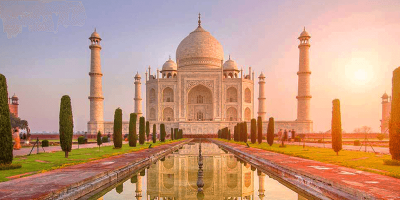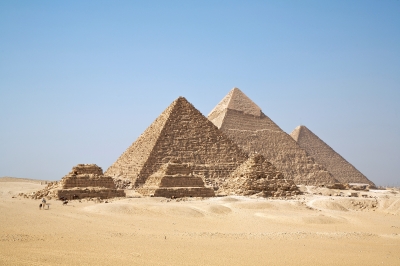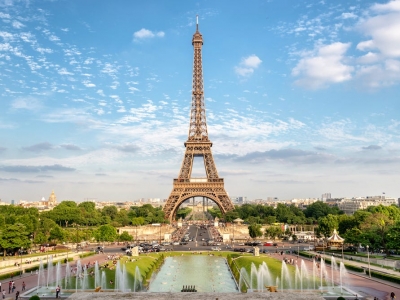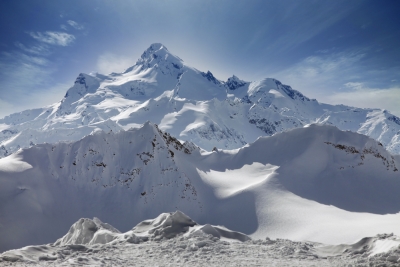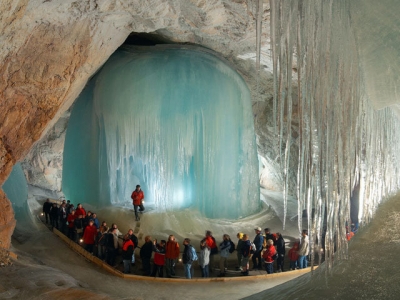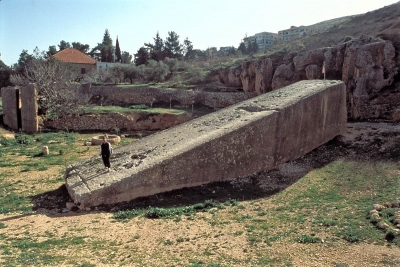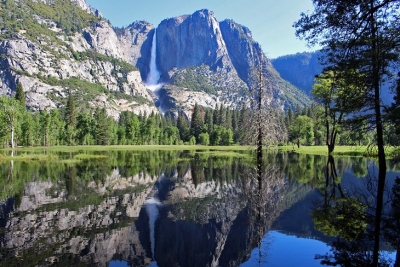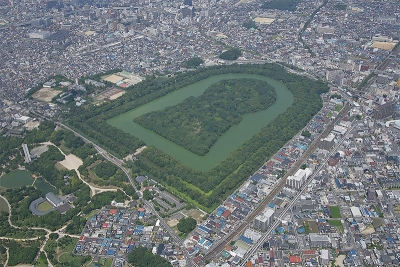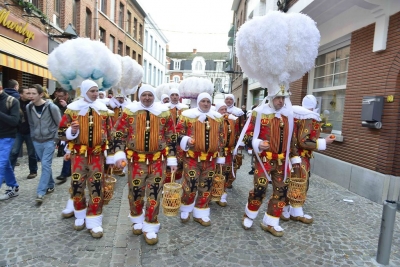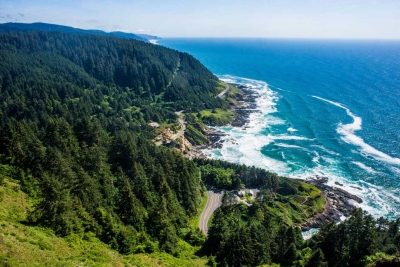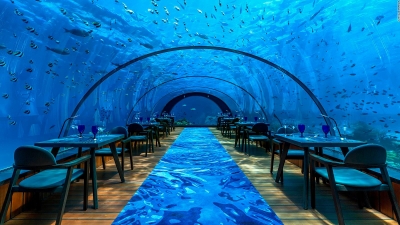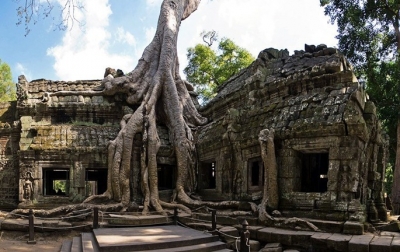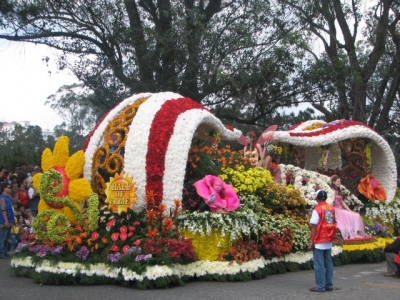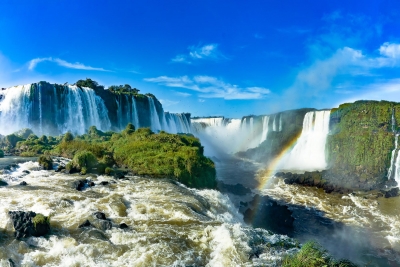
Many of the world’s most amazing sights were not made by people. Nature has some of the best attractions.
Some of the most beautiful natural wonders on Earth feature spectacular rivers or waterfalls. For instance, the Amazon River in South America is so wide that in some places you can’t see the other side. It is the second longest river in the world. The Amazon starts in Peru and flows all the way across Brazil to the Atlantic Ocean.
Also in South America are the Iguacu Falls. This is actually an entire system of nearly 500 waterfalls that are separated by small islands. The falls form part of the border between Argentina and Brazil. The site is one of the most popular attractions in South America.
Wide beams of coloured light shine on rushing falling, crashing water at Niagara Falls. Niagara Falls is made up of two waterfalls, the Horseshoe Falls on the Canadian side of the border and the American Falls on the U.S. side. Millions of people visit this site each year.
In Africa, the rushing waters of the Victoria Falls, on the border of Zambia and Zimbabwe, sound like thunder. The fall's huge clouds of spray look like thick white smoke. At its highest point, this waterfall on the Zambezi River plunges 111 metres into a rocky canyon.
The world's largest desert is also a natural wonder. This desert, the Sahara, also lies in the continent of Africa. The Sahara is almost the size of the entire United States. Part of this desert is sand, but most of it is rock and gravel plains.
Sometimes, it's not the place that's a natural wonder-but what lives there. Tsavo (SAH voh) National Park in Kenya stretches for thousands of miles. But the wondrous part of the park is the animals-buffaloes, cheetahs, elephants, rhinoceroses, and zebras, for instance that roam freely there. With some wonders, it is the actual site that's amazing. In North America, the Colorado River has been cutting a giant canyon in Arizona for 6 million years.
This valley is so deep that people call it the Grand Canyon. In some places, the canyon is 1.6 kilometres deep and up to 29 kilometres wide.
Some natural wonders are underwater! A coral reef is made up of the hardened skeletons of tiny animals called coral polyps. The Great Barrier Reef, off the coast of Australia, is the largest coral reef in the world. This chain of reefs extends for about 2,000 kilometres. People from all over the world come to see the amazing variety of fish that live there.
Some natural wonders are mountains. Mount Fuji is the pride of Japan and is sacred to many Japanese people.
The highest mountain in the world is also in Asia. Mount Everest, on the borders of Tibet and Nepal, is 8,850 metres high. Everest is called Chomolungma by the Tibetans and Sagarmatha by the Nepalese, both names basically mean "Goddess Mother of the Earth." Many Buddhists-followers of a major religion founded about 500 B.C. by a teacher who came to be known as Buddha-consider Mount Everest to be sacred.
Picture Credit : Google

